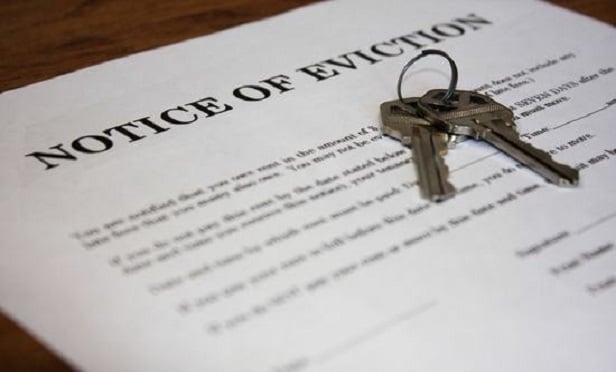Features

Class Counsel Get Favorable Ruling in NFL Concussion Litigation
A federal judge sided with class counsel in the NFL concussion litigation on several disputes, including how the former players' claims should be processed and whether attorney fee awards should be delayed until more payments are made to the claimants.
Features

The Do's and Don'ts of 'Yellowstone' Injunctions: A Brief Survey
A Yellowstone injunction proceeding is a proceeding in New York court in which a commercial tenant seeks to enjoin the landlord from evicting the tenant for an alleged breach of the lease. This temporary relief preserves the tenant's ability to cure should the court determine that the tenant is in breach, and thus avoid forfeiting its substantial investment in the leasehold.
Features

Defeating Certification of “No-Injury” Consumer Protection Class Actions
In the past several years, plaintiffs' firms have threatened or brought class actions against different companies under New Jersey's Truth-in-Consumer Contract Warranty and Notice Act (TCCWNA). Here's what you need to know.
Features

The False Claims Act Seal: The DOJ's Position
<b><i>Part Two of a Three-Part Article</i></b><p>Notwithstanding the absence of an explicit gag order in the statute, the DOJ takes the position that, even if the relator properly files the case under seal at the outset, that relator can later “breach the seal,” and be subject to judicial sanction, if he or she discloses the existence of the <i>qui tam</i> to others.
Features

Internet Goods and Product Liability
The Internet's value arises in part from its ability to provide images, data and content quickly and at little cost. This ability results from the fact that Internet products — whether they be images, data or content — are each reduced to a digital format. Sharing products that have been so reduced may result in product liability.
Features

Exclusion of Evidence: The FDA's 510(k) Process
In a drug or medical device injury case, one of the defense's most potent arguments is often that the product in question underwent FDA approval, so the balance of its safety and efficacy has already been determined. But when a device is approved for sale to the public through the FDA's 510(k) process, the rigorous safety and efficacy analysis required of new and unique medical devices has not been undertaken.
Columns & Departments
IP News
Federal Circuit Affirms Finding That Rembrandt's Patent Is Not Infringed by Apple's Accused Products<br>District Court Transfers Case after Federal Circuit Ordered It to Reconsider Party's Venue Objections In Light of <i>TC Heartland</i><brPTAB Decision Invalidating AIP Internet Network Patent Affirmed on Appeal
Features

Connecticut Supreme Court Defines Bankruptcy Effect on Contracts
Bankruptcy “does not constitute a per se breach of contract and does not excuse performance by the other party in the absence of some further indication that the [debtor] either cannot, or does not, intend to perform,” held the Supreme Court of Connecticut in a lengthy opinion on Nov. 21, 2017. This article presents an analysis of the ruling.
Columns & Departments
Development
Analysis of a case in which a moratorium was invalidated.
Features

DE Courts Uphold Strict Limitations on Liability for Oversight Claims
In 2017, two cases illustrated that Delaware courts continue to impose exacting pleading burdens on <i>Caremark</i> claims, especially when plaintiffs say that they are excused from making a demand on the board before suing derivatively.
Need Help?
- Prefer an IP authenticated environment? Request a transition or call 800-756-8993.
- Need other assistance? email Customer Service or call 1-877-256-2472.
MOST POPULAR STORIES
- Use of Deferred Prosecution Agreements In White Collar InvestigationsThis article discusses the practical and policy reasons for the use of DPAs and NPAs in white-collar criminal investigations, and considers the NDAA's new reporting provision and its relationship with other efforts to enhance transparency in DOJ decision-making.Read More ›
- Surveys in Patent Infringement Litigation: The Next FrontierMost experienced intellectual property attorneys understand the significant role surveys play in trademark infringement and other Lanham Act cases, but relatively few are likely to have considered the use of such research in patent infringement matters. That could soon change in light of the recent admission of a survey into evidence in <i>Applera Corporation, et al. v. MJ Research, Inc., et al.</i>, No. 3:98cv1201 (D. Conn. Aug. 26, 2005). The survey evidence, which showed that 96% of the defendant's customers used its products to perform a patented process, was admitted as evidence in support of a claim of inducement to infringe. The court admitted the survey into evidence over various objections by the defendant, who had argued that the inducement claim could not be proven without the survey.Read More ›
- The DOJ's New Parameters for Evaluating Corporate Compliance ProgramsThe parameters set forth in the DOJ's memorandum have implications not only for the government's evaluation of compliance programs in the context of criminal charging decisions, but also for how defense counsel structure their conference-room advocacy seeking declinations or lesser sanctions in both criminal and civil investigations.Read More ›
- The DOJ's Corporate Enforcement Policy: One Year LaterThe DOJ's Criminal Division issued three declinations since the issuance of the revised CEP a year ago. Review of these cases gives insight into DOJ's implementation of the new policy in practice.Read More ›
- Strategy vs. Tactics: Two Sides of a Difficult CoinWith each successive large-scale cyber attack, it is slowly becoming clear that ransomware attacks are targeting the critical infrastructure of the most powerful country on the planet. Understanding the strategy, and tactics of our opponents, as well as the strategy and the tactics we implement as a response are vital to victory.Read More ›
